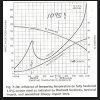http://www.azom.com/article.aspx?ArticleID=6561
http://www.suppliersonline.com/propertypages/1095.asp
They are just descriptions, rather than impact strength charts (which don't seem to exist for 1095).
Contrast with the "good toughness" of A2:
http://www.hudsontoolsteel.com/technical-data/steelA2
I don't think any of that is definitive. It just reflects the sort of things I've read elsewhere - especially chatting with people like Kevin Cashen. 2-3% carbide volume doesn't sound like much, but we are talking about a type of steel that is 98.5% iron, so when you say the carbide volume is
only 2 or 3%, I see the carbides doubling the alloying ingredients volume and wonder if 3% is actually a small number for a steel that doesn't have a ton of chrome or anything else in it.
One damn temper/impact strength chart for 1095 (and the 10xx series) and this wouldn't be a discussion anymore. I just have this honestly obtained idea that cemetite carbides in an otherwise un-alloyed steel matrix hurt impact resistance, while something like 1070 is preferred for train tracks and chrome steels like 52100 for bearings - because both need to be tough.
http://www.hypefreeblades.com/forum/viewtopic.php?f=3&t=753&p=6334&hilit=1095+toughness#p6334
http://www.hypefreeblades.com/forum/viewtopic.php?f=3&t=230&p=1957&hilit=1095+toughness#p1957



